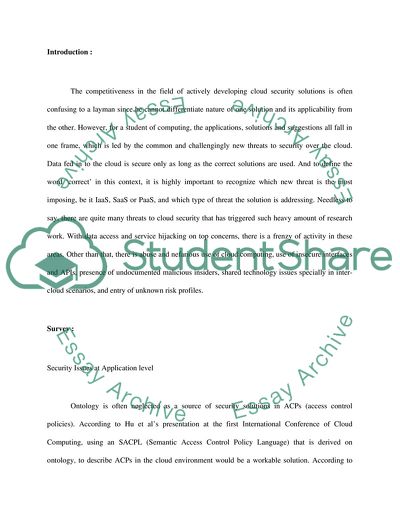Cite this document
(An Investigation into Threats to Cloud Computing Security Coursework Example | Topics and Well Written Essays - 2500 words, n.d.)
An Investigation into Threats to Cloud Computing Security Coursework Example | Topics and Well Written Essays - 2500 words. https://studentshare.org/information-technology/1838360-research-survey-write-a-survey-article-about-an-area-of-computer-science
An Investigation into Threats to Cloud Computing Security Coursework Example | Topics and Well Written Essays - 2500 words. https://studentshare.org/information-technology/1838360-research-survey-write-a-survey-article-about-an-area-of-computer-science
(An Investigation into Threats to Cloud Computing Security Coursework Example | Topics and Well Written Essays - 2500 Words)
An Investigation into Threats to Cloud Computing Security Coursework Example | Topics and Well Written Essays - 2500 Words. https://studentshare.org/information-technology/1838360-research-survey-write-a-survey-article-about-an-area-of-computer-science.
An Investigation into Threats to Cloud Computing Security Coursework Example | Topics and Well Written Essays - 2500 Words. https://studentshare.org/information-technology/1838360-research-survey-write-a-survey-article-about-an-area-of-computer-science.
“An Investigation into Threats to Cloud Computing Security Coursework Example | Topics and Well Written Essays - 2500 Words”. https://studentshare.org/information-technology/1838360-research-survey-write-a-survey-article-about-an-area-of-computer-science.


